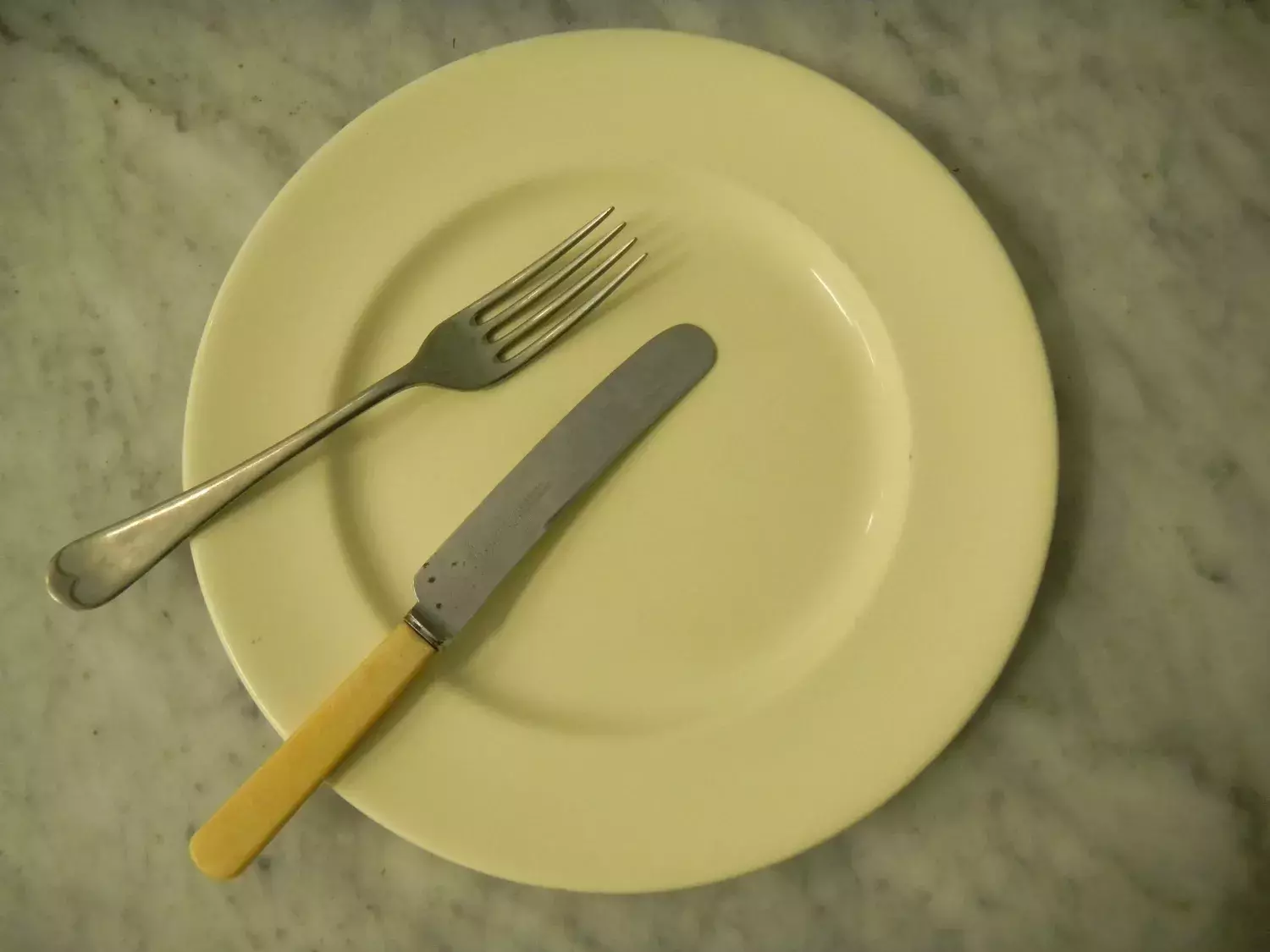Plates, forks and knives used by Curtin family
At dinnertime those of the family who were at home would sit around the dining table, which was darkly polished with a veneer top and a matching set of chairs. It had replaced an earlier yellow oak dining suite with a table that could be adapted for table tennis and ‘bobs’, a modified version of billiards.
The dining table would be set with a cloth and everyone was at their own place, with their own napkins and serviette rings. Dinner guests were rare. John Curtin’s place was usually unoccupied. In his time a pair of French doors was opened onto the verandah in warm weather. After the war that part of the verandah was enclosed to make a play area for Elsie and Stan Macleod’s daughter Bev.
If Curtin was there when the telephone in the hall rang during mealtimes his meal would be kept warm in the oven. Once, John Jr recalled, when Curtin chastised the Deputy Prime Minister on the telephone in the hall, ‘it was quite exciting, we paused in our evening meal to listen’. Elsie brought her sense of humour to family meals; young Elsie described how ‘We could scream laughing at my mother. In the middle of a meal she’d suddenly get up and she’d be acting this scene out … then she’d sit down to a cold meal’.
The dining room also contained a glass-fronted china cabinet used to store special cutlery, glasses and china. As John Jr said,‘They were the best ones, you know, the ones I was never allowed to use. They were brought out for visitors. It was just a normal household when it came to that. Everybody else did the same. Ours was no different’.
John Curtin ate moderately and preferred plain cooking. Elsie Macleod recalled that 'he wasn’t a big eater … invariably he would get up from the table and probably smoke, read and listen to the wireless in the lounge room. My mother and my grandmother and myself … the three of us would be sitting around the table still eating scones or whatever.'
Plates: 'Victorian', made by Johnson Brothers, cream, 25cm diameter
This plain cream china was for everyday use.
FORK, 'NS', Dixon, four prongs
Nickel silver (NS) is a copper alloy with nickel and often zinc. James Dixon and Sons, of Sheffield, England, made cutlery from nickel silver from 1836, and started to produce electroplate 12 years later. The firm began to make stainless steel flatware and hollowware in the 1920s. Nickel silver has been used to make cheaper types of cutlery.
Table knife: stainless steel, separate xylonite handle, made by Christopher Johnson & Co., Sheffield, England
Christopher Johnson & Co was established in the nineteenth century. Its title changed to Christopher Johnson (Cutlers) Ltd in 1939. Its stamp therefore suggests that this knife was produced before 1939. The factory closed in 1955.

Photo: National Trust of Western Australia

